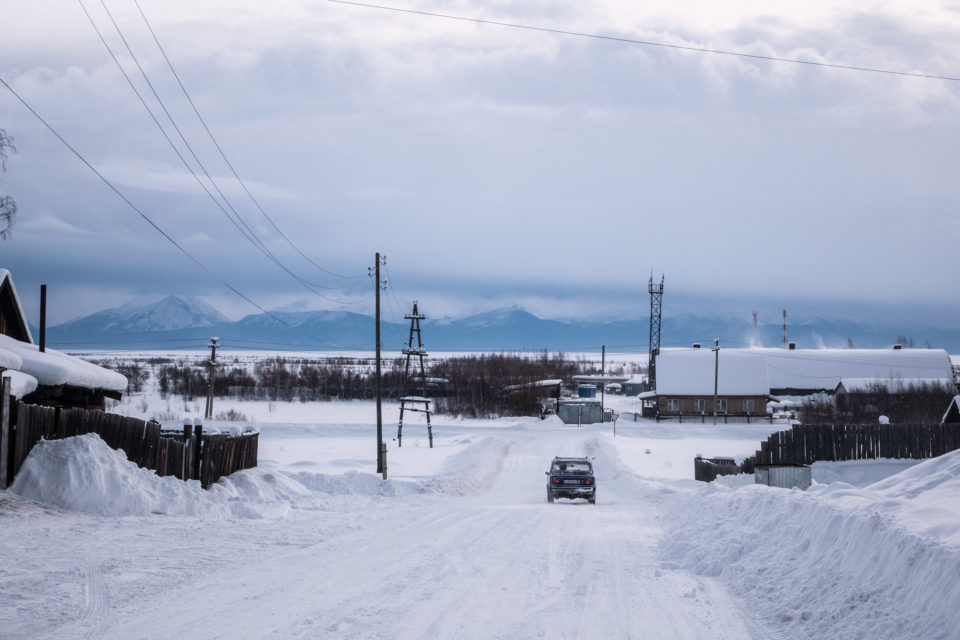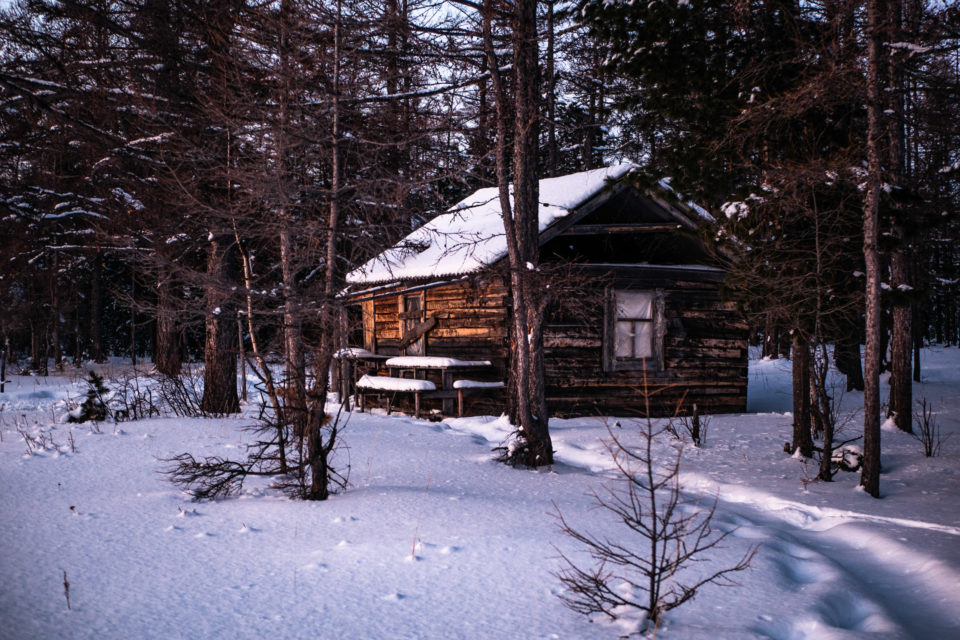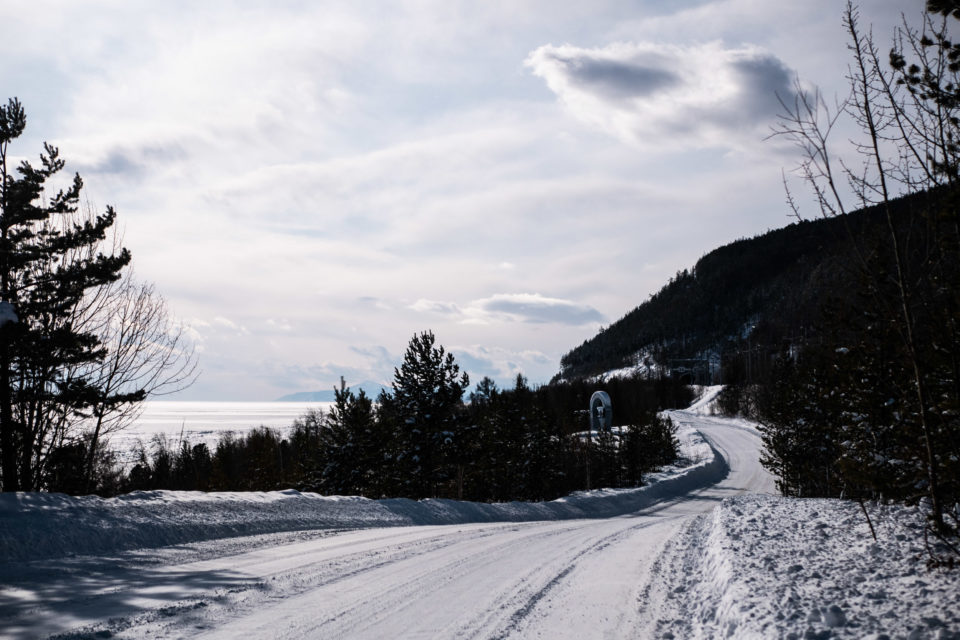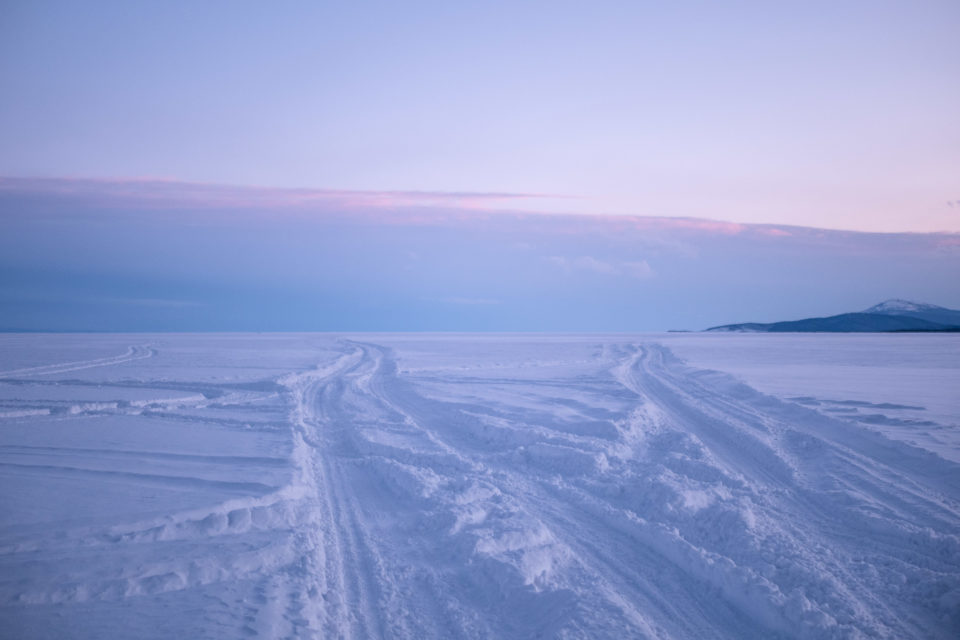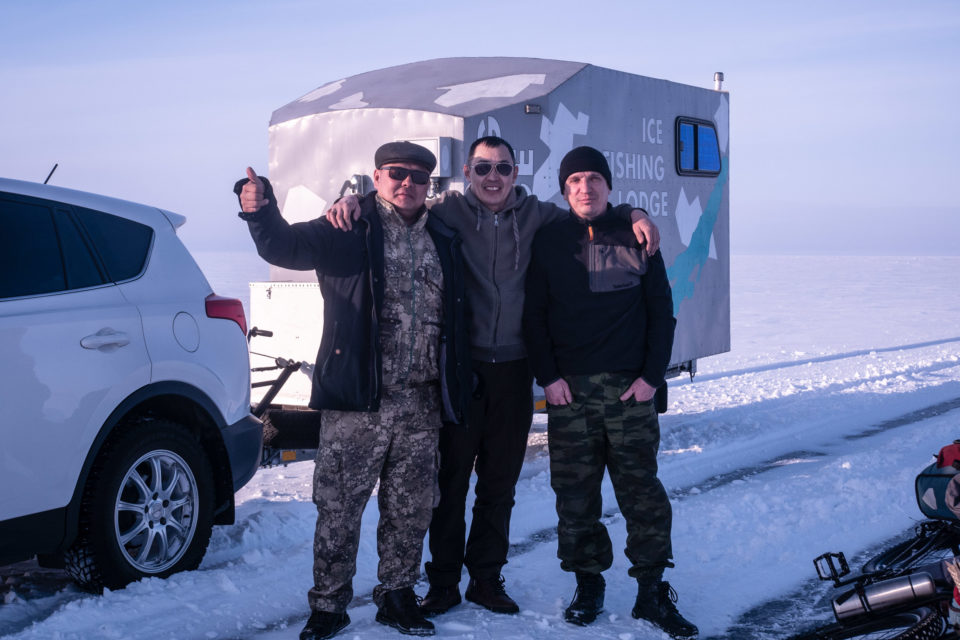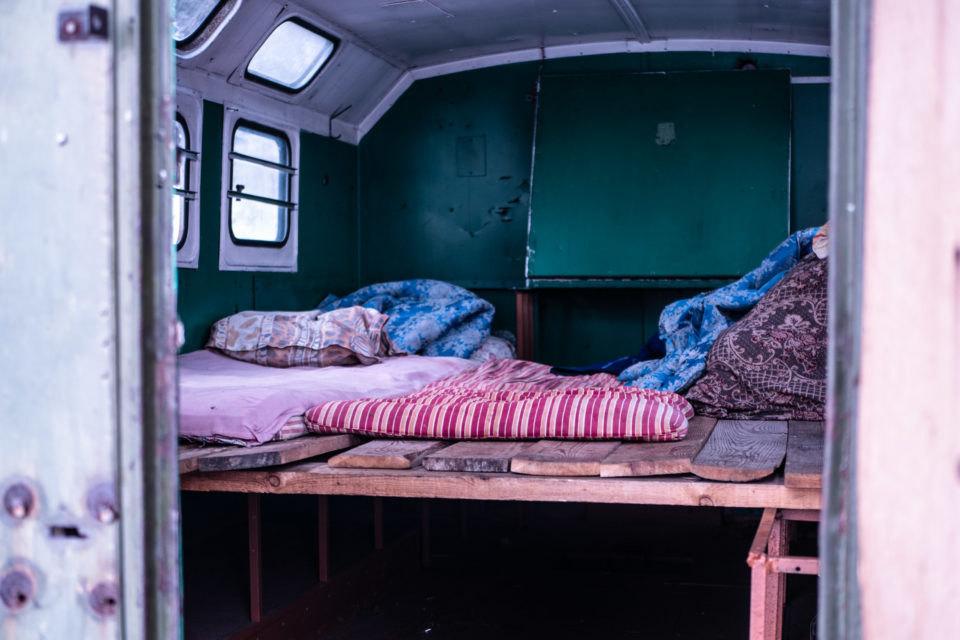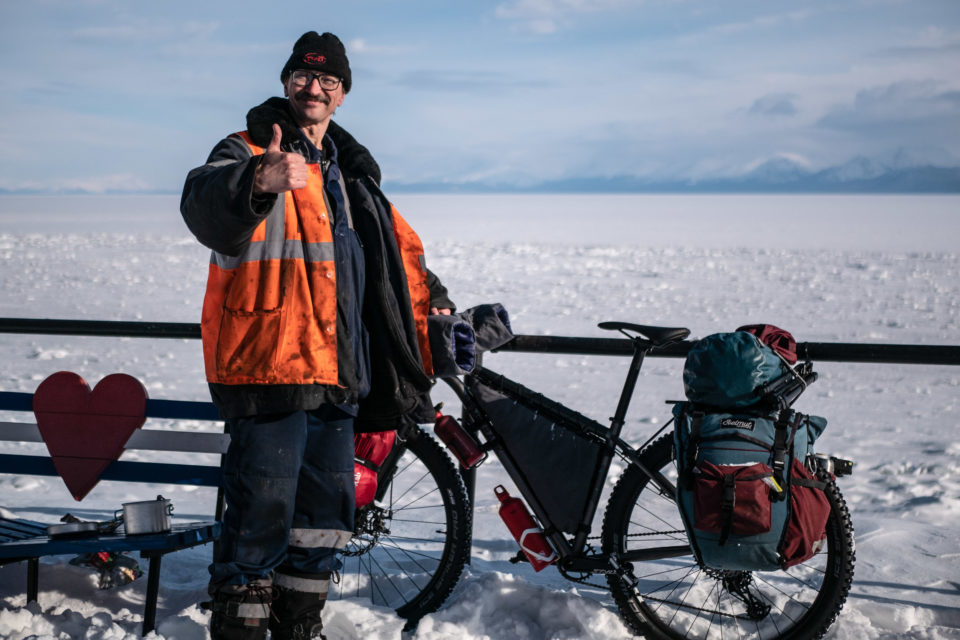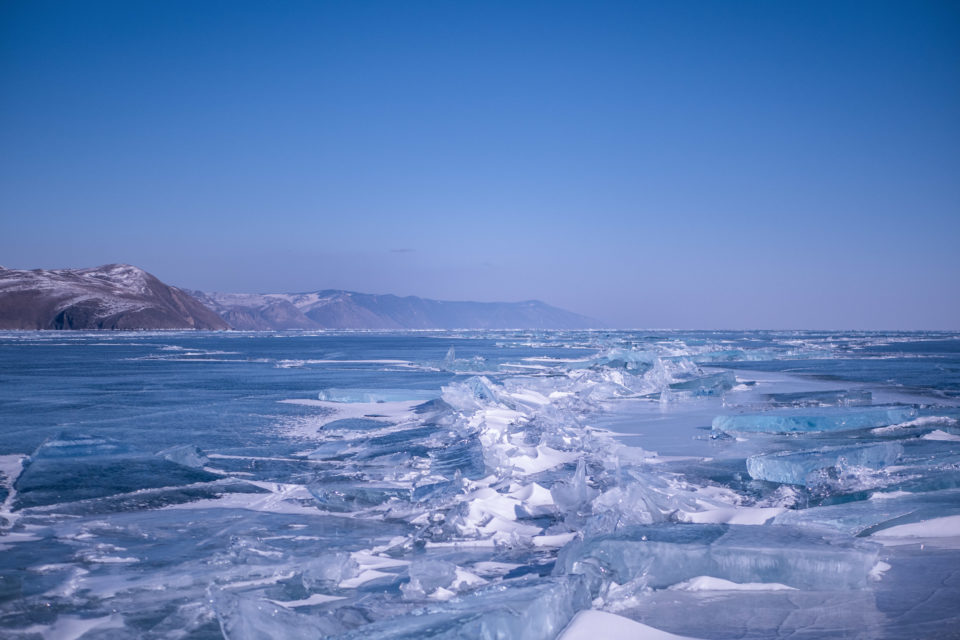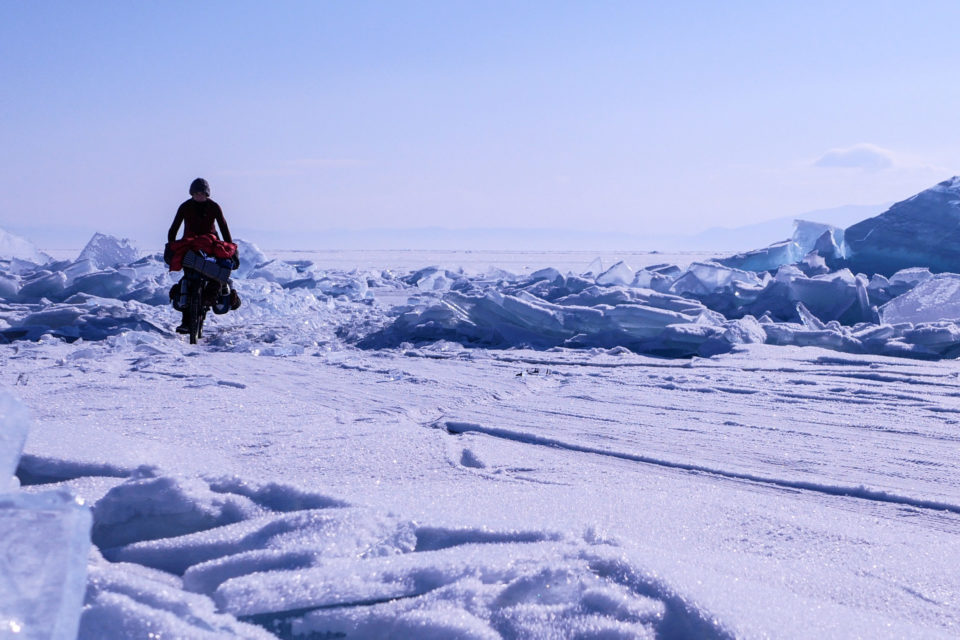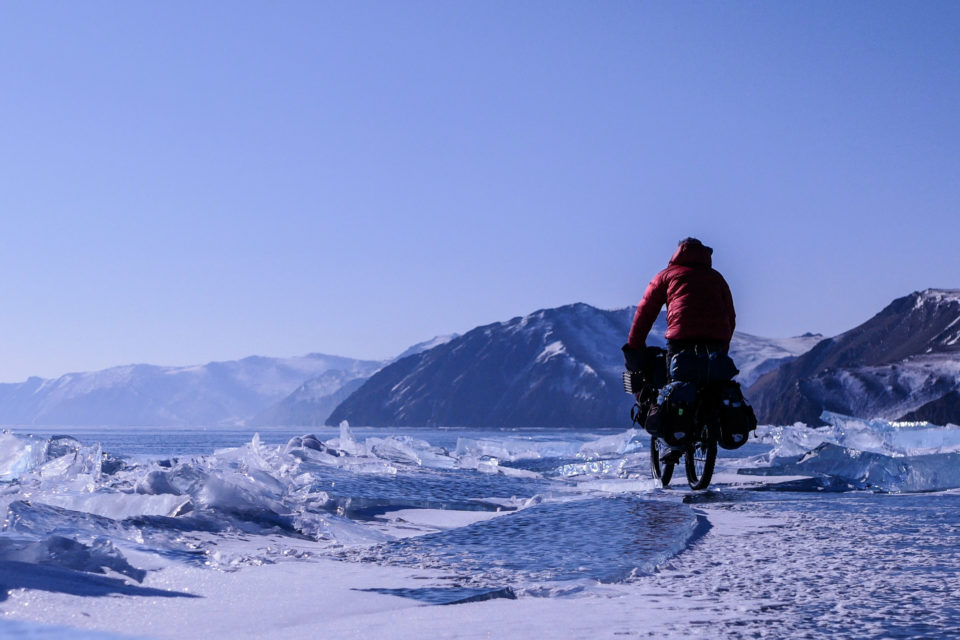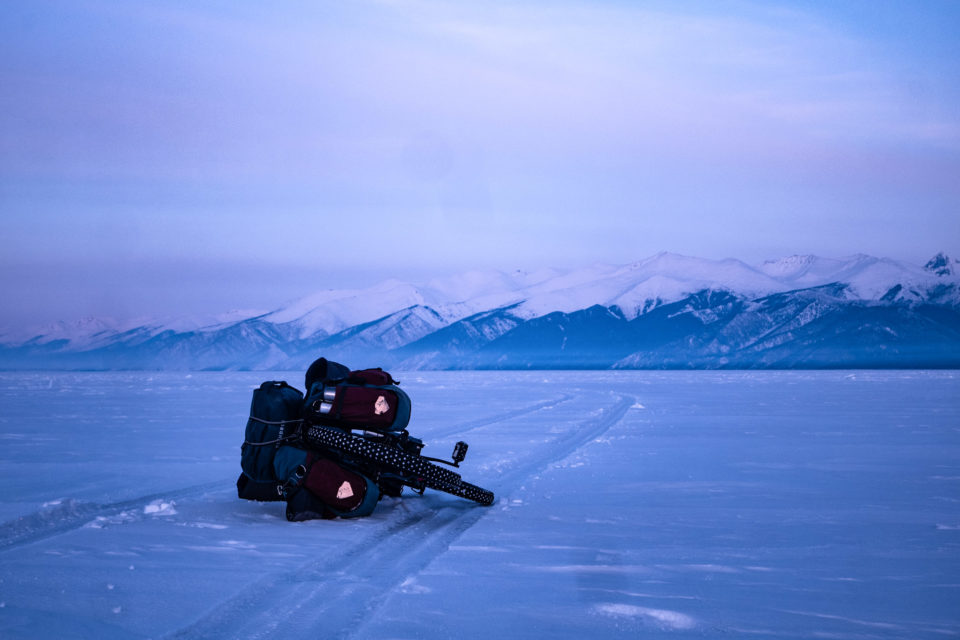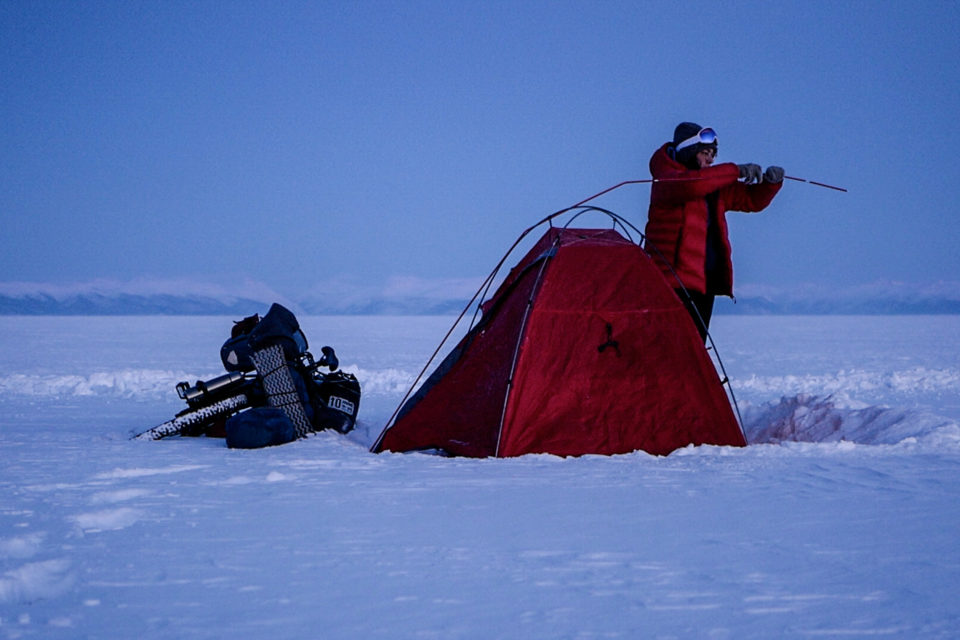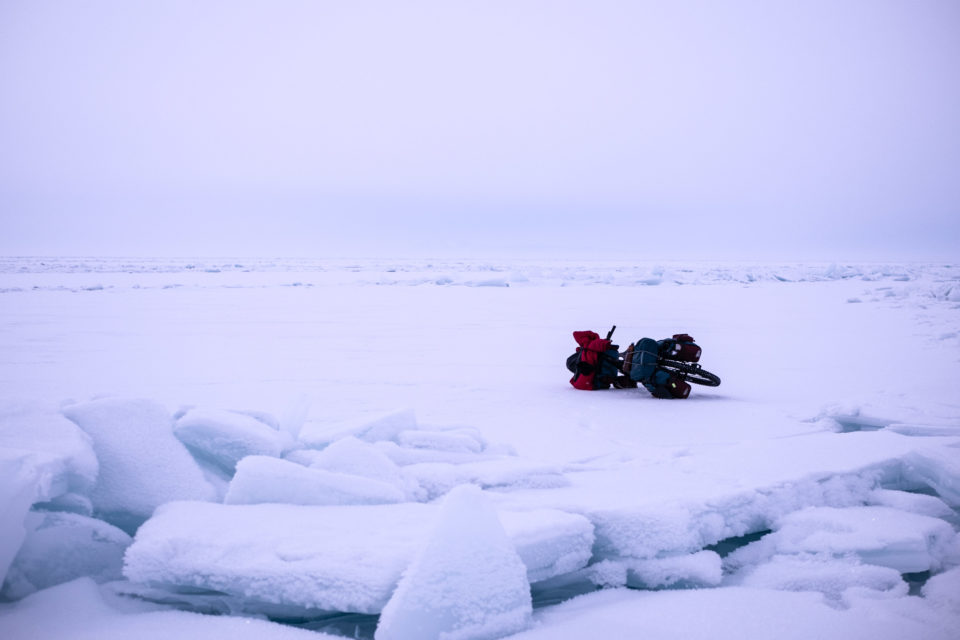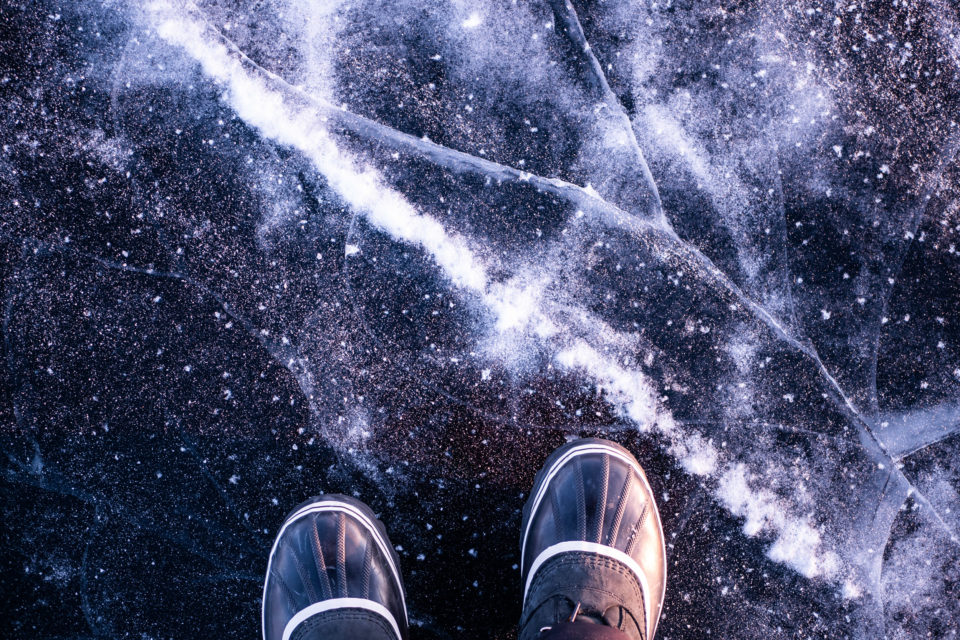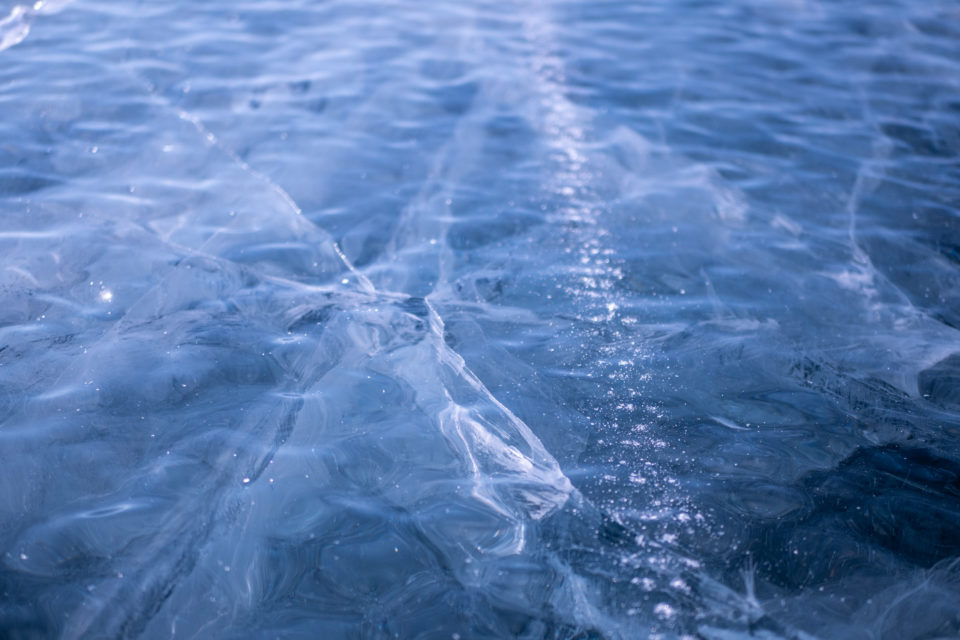Whiteout: A Winter Journey Across Lake Baikal
Share This
Gaëlle Bojko’s love of riding through snowy landscapes led her to push and pedal her loaded bike across Siberia’s Lake Baikal in the dead of winter. Read on for her incredible story of searching for faint tracks in the snow and traversing the shifting, cracking ice atop the deepest lake in the world…
Words and photos by Gaëlle Bojko (@biketotheblocks)
I stood on the shore of Lake Baikal, contemplating the vast, flat, white surface ahead of me, the snow-capped mountains in the distance, and my bike sunken into the knee-deep snow. So, here it is. I’d been attempting to push through the thick white powder with limited success. It was early February and I was in the middle of Siberia with a plan to ride about 900 kilometres across the frozen surface of the deepest freshwater reservoir in the world.
“But why?” I was asked countless times when I told my friends and family I was planning to cycle over a frozen lake in Russia. They tried to talk me out of it, presenting arguments about the dangers, the remoteness, the language barrier, and trying to remind me about the struggles I had the last time I rode through a cold place. But I learned from my previous experience, and despite the trouble I went through with an unsuited bike, I loved the snow-covered landscapes, the muffled sounds, the reflection of the light, and the calming tranquillity of these seemingly still environments. I don’t mind suffering when I find myself in such extraordinary surroundings, so I prepared a bit better and headed towards Russia with a new and whimsical aspiration: to ride atop frozen Lake Baikal.
I tried not to anticipate anything about the journey, but I knew this winter was exceptionally warm across the northern hemisphere and I wasn’t too sure about the conditions on the lake. One thing I didn’t expect was unusually heavy snowfall prior to and upon my arrival at Severobaikalsk, a small town at the very north of the lake, where I started my journey.

On my way to fill my fuel bottles, I bumped into Maxwell and David, two American cyclists who planned to ride across the lake too. They’d decided to begin their crossing that day despite the snow. We wished each other luck, and I chose to wait to start once the thick, heavy snowflakes had stopped falling.
The sky cleared two days later, and the fierce sun brightly reflected off the 60 centimetres (23.6 inches) of fresh, powdery snow that covered the lake. My tyres almost instantly became stuck in the soft white blanket, and I found myself standing there, pondering what to do. The coastal road leads to a dead end 50 kilometres further south, it’s a 36-hour train ride to the other side of the lake, and I’d come all the way here to ride my bike on the lake anyway.
It’s an uneasy feeling, spending months preparing a trip, dreaming about it, taking a six-day train ride, only to finally be stuck upon arrival. I felt trapped between the high mountains on my right and the uniform surface of the lake. I couldn’t cross either one, I had no plan B, and the suspicious looks I was being given were making me uncomfortable.
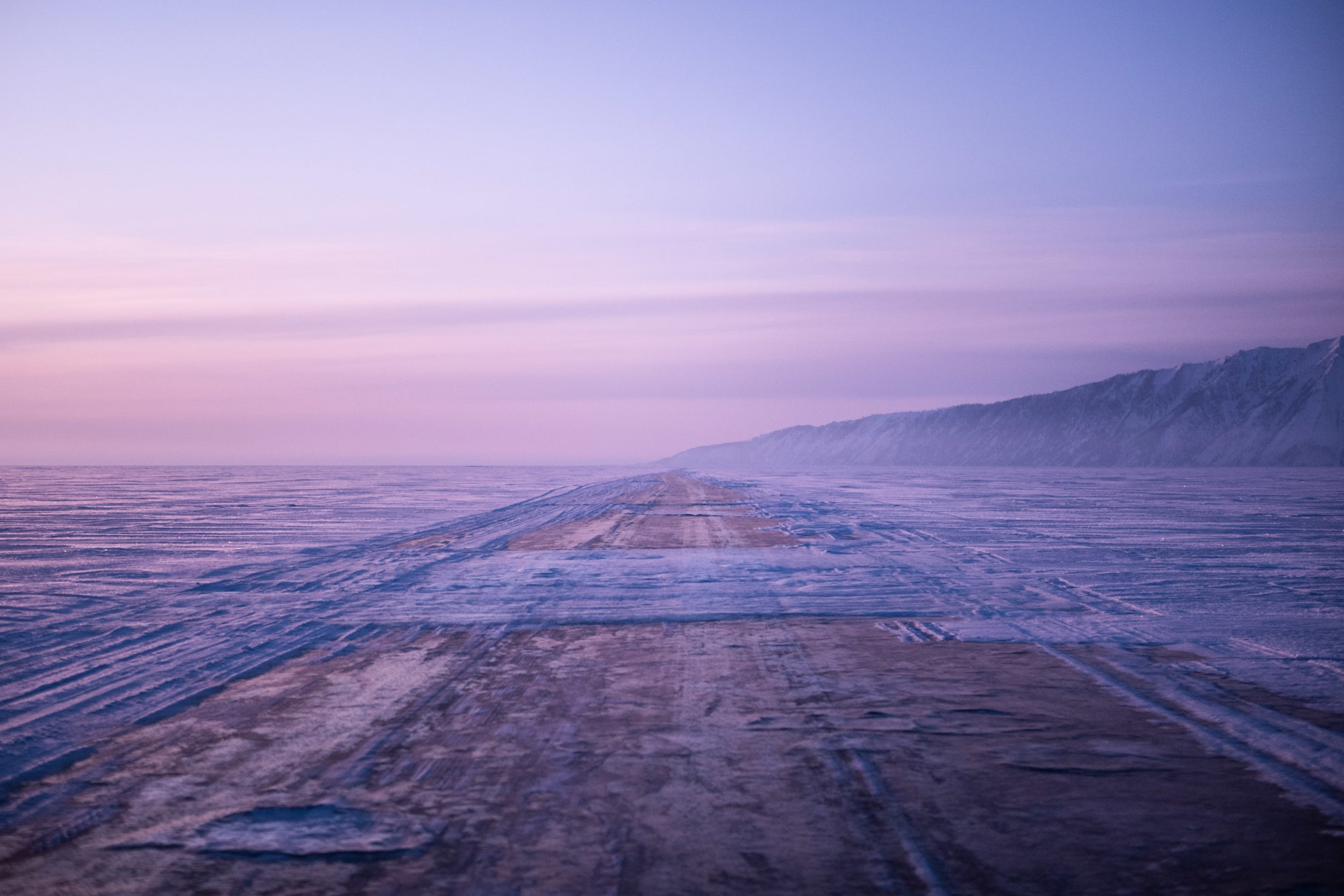
When nothing goes right and there’s seemingly no way out, it takes many deep breaths and compassionate self-talk to overcome stress instead of getting upset. I thought about all the people whose mental strength I admire. What would they do? Would they push onwards? Would they make an alternate plan? I stepped back, had another glance at my bicycle—covered in fine snow blown by the chilling wind—and decided to follow the coastal road in hopes the wind would blow some of the dusty snow from the surface of the lake while I rode along.
The dirt track was straight and icy and it cut through a thick birch and pine forest, typical of Siberia. I was following a line that had been thoroughly traced for hundreds of years, without any semblance of a plan in my mind. The sun was shining, the air was chilly, and I was thrilled to be pedalling. As the sun set, I took a small path that led towards the lake to set up camp. I was facing the huge, white, somewhat discouraging vastness once again, but a big smile appeared on my face when I spotted a set of car tracks across the lake’s surface. I decided to follow them the next morning—they had to go somewhere.

It turned out the tracks were part of a route that fishermen in trucks used to reach their camps. Pine tree branches in the snow were scattered along the way to mark the doubletrack when the light was too dim. Overtaking vehicles would pass one another, kicking up immense clouds of powdery snow as they charged through deeper drifts. Every vehicle that passed me stopped and the men inside contorted to have a look at the strange woman alone on a bicycle. A miasma of smoked fish was inevitably released as they wound down the window, followed by an offering of the pungent fish, a cup of sweet tea, or a lift. From time to time, the track would get closer to the shore and I’d find myself surrounded by blocks of crystal-clear ice protruding from the miniature mountain ranges beneath my tires, the track zigzagging down their valleys.
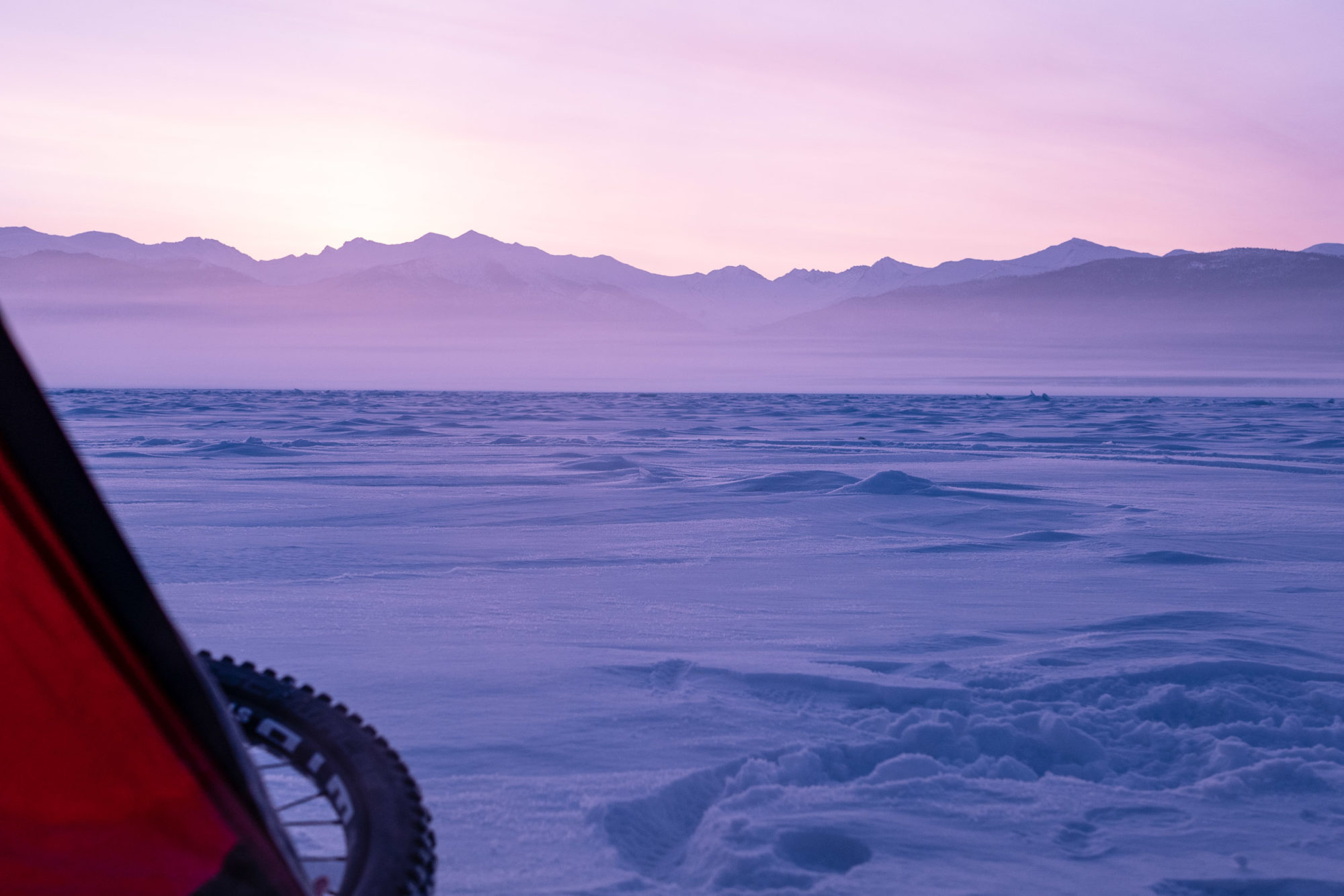
After 75 kilometres on the lake, I noticed two dark silhouettes in the distance. It was David and Maxwell, heading back to Severobaikalsk. Too much condensation was forming in their tent and it was soaking their gear as a result. We stopped to chat for a while and arranged to meet two weeks later in a warmer place to share a beer and some stories from the lake.
I continued heading south for three more days as the track turned rougher and rougher. I was stopped by a group of fishermen who were towing their friend’s Lada with an axle that had completely frozen. They alerted me that the road ended 30 kilometres ahead, but offered to drive me back to the last village to cross the lake and follow the “road” on the eastern shore instead. I accepted their offer and they carefully lashed my bike to the back of the rattling pick-up, as I stood watching, drinking the tea they’d given me while refusing to let me help.
I had only a week’s worth of food and stove fuel, but I still had 450 kilometres to cover before the next town. I had no choice but to speed up, and time pressure was added to by the cold, the snow, and the remoteness. My three new friends had a quick talk and drove me to the road they’d recommended I should follow. We had a final cup of tea and I offered them a heartfelt thanks before starting to pedal away, my eyes fixed on the tyre tracks ahead of me, but allowing myself a few quick glimpses at the incredible mountains on the eastern side.
The next days were all about averaging 80 kilometres daily, in between waving at the passing fishermen and answering their questions, listening to the crashes of the cracking ice, and staring at the unchanging white horizon I was heading towards. I spent my evenings contemplating the brightest sky I had ever found myself under and building fires to thaw me. I felt at the mercy of the vast, inhospitable, and equally spectacular landscape. My face was scorched by the sun’s fierce reflection off the snow and the sharp, cold wind. I’d also somehow strained both of my forearms, my legs were starting to develop painful chilblains from the contact with the cold steel frame of my bike, and my bottom didn’t enjoy sitting on a cold saddle for such long stints, not to mention the fact that it’d been days since I had proper feeling in my toes. I was constantly teetering on the line between demanding, strenuous times and overwhelming joy. A patch of snow-free ice, an evening light, or a tricky crack in the ice would cheer me up, as if the harshness of the surroundings had amplified my feelings.
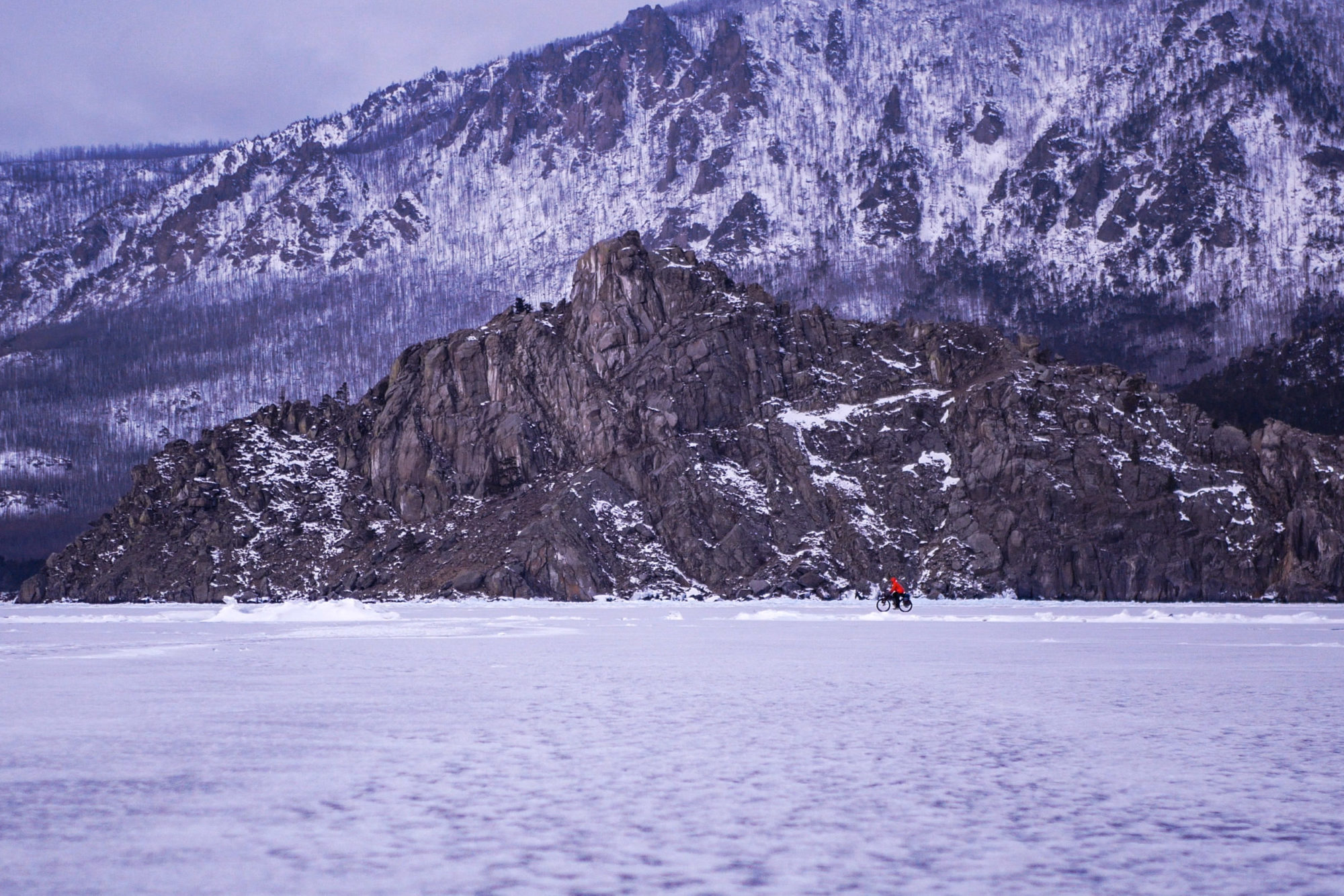
After resupplying at Ust-Barguzin, the plan was to cross the lake again and follow the western shore down to Listvyanka, and the end of my journey, around 400 kilometres south. The road was supposed to be straightforward, as there are some tourists in that area. I left Ust-Barguzin and got back on the lake, feeling pretty confident about the days ahead, especially since I was told the ice was snow-free on the opposite shore. I headed west with a dream of gleaming ice, my face layered with sunscreen and my bags packed full of biscuits to keep me going.
Around 50 kilometres down the track, I encountered a massive crack in the ice so large that it made it impossible for cars to continue further on. I hauled my bike over it, hoping to catch the road on the other side, but the trail had disappeared under a fine layer of snow blown in by the relentlessly strong wind. I knew there had to be another route, but spotting it was hopeless on a surface so flat and uniform. I decided to set up camp on the ice and start pedalling through the snow early the next morning.
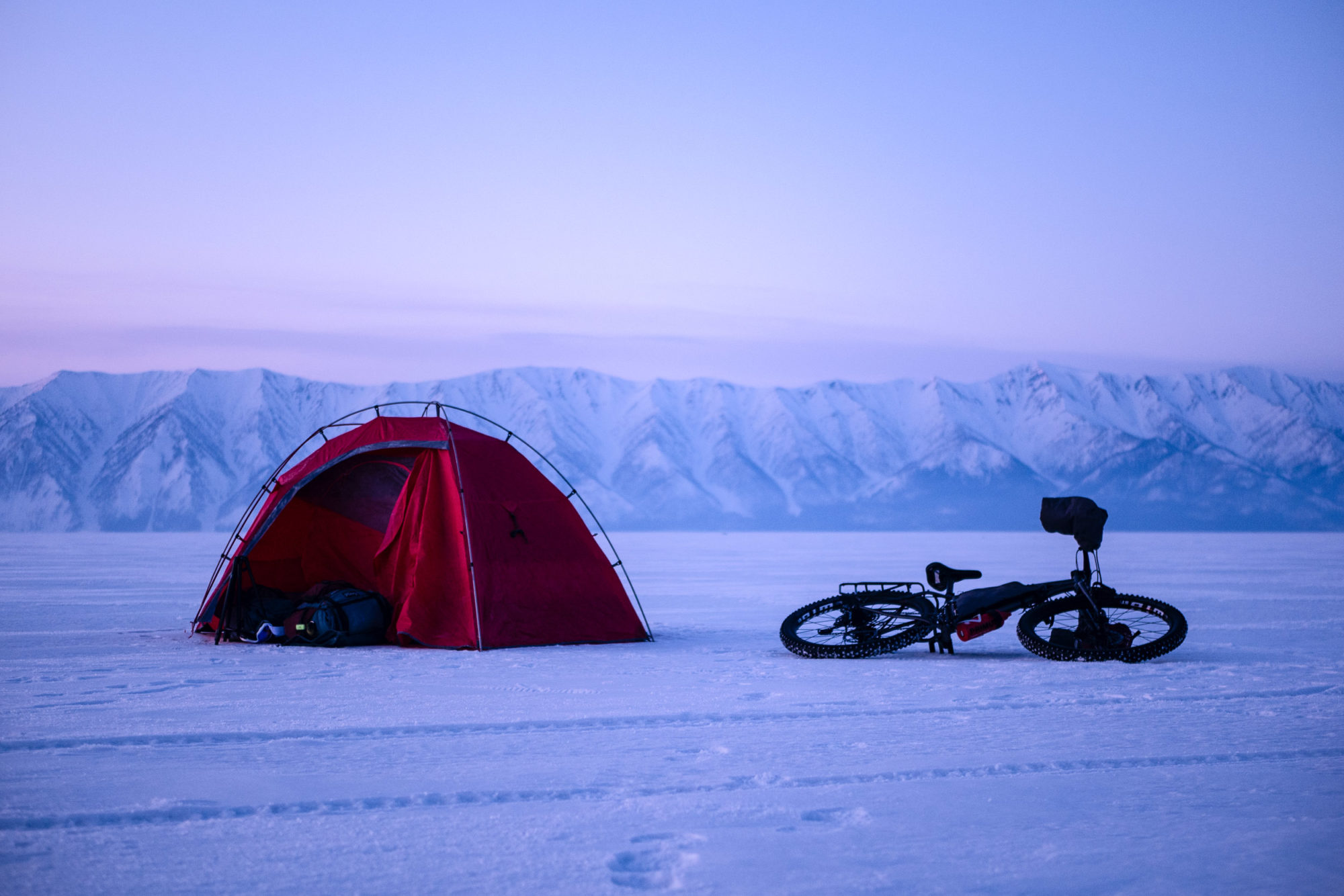
I still had about 60 kilometres to go until I reached the opposite shore. After a few kilometres, I found myself surrounded by towering blocks of ice that were bigger than anything I’d ever seen. The shadowy snow was deep and it merged with the cloudy grey sky in the distance. I was just above the lake’s infamous rift zone, where the ice was thin and constantly moving. The thunderous cracking sound it made was terrifying.
It was getting late and I’d only covered 20 kilometres, but there was no way I was going to camp on that unstable surface. I’d never felt so vulnerable, lonely, and afraid. I had to keep on pushing through the night, despite knowing I’d likely drift off course, given the lack of any visual bearing to head for. I swigged my mug of warm tea and started rolling over the rough surface, telling myself it would be all right.
The snow and the sky were turning blue as the day was coming to an end when I spotted two tiny moving black dots in the distance. They were cars—I had found the road! Riding quickly towards it, my relief at the sight of distant pine branches was euphoric. I bounced along the bumpy track through the dusk until I was close enough to shore to set up my tent.
I awoke the next morning to the rumble of busses, then tourists photographing my tent, some of them posing in front of it. I held back my laughter—one day I’m having a terrible time, the next one starts in the most absurd way. It seemed like a completely different world: hovercrafts buzzing, the fishermen’s rusty trucks now replaced by gleaming vehicles packed with tourists, waving and pointing their cameras towards me.
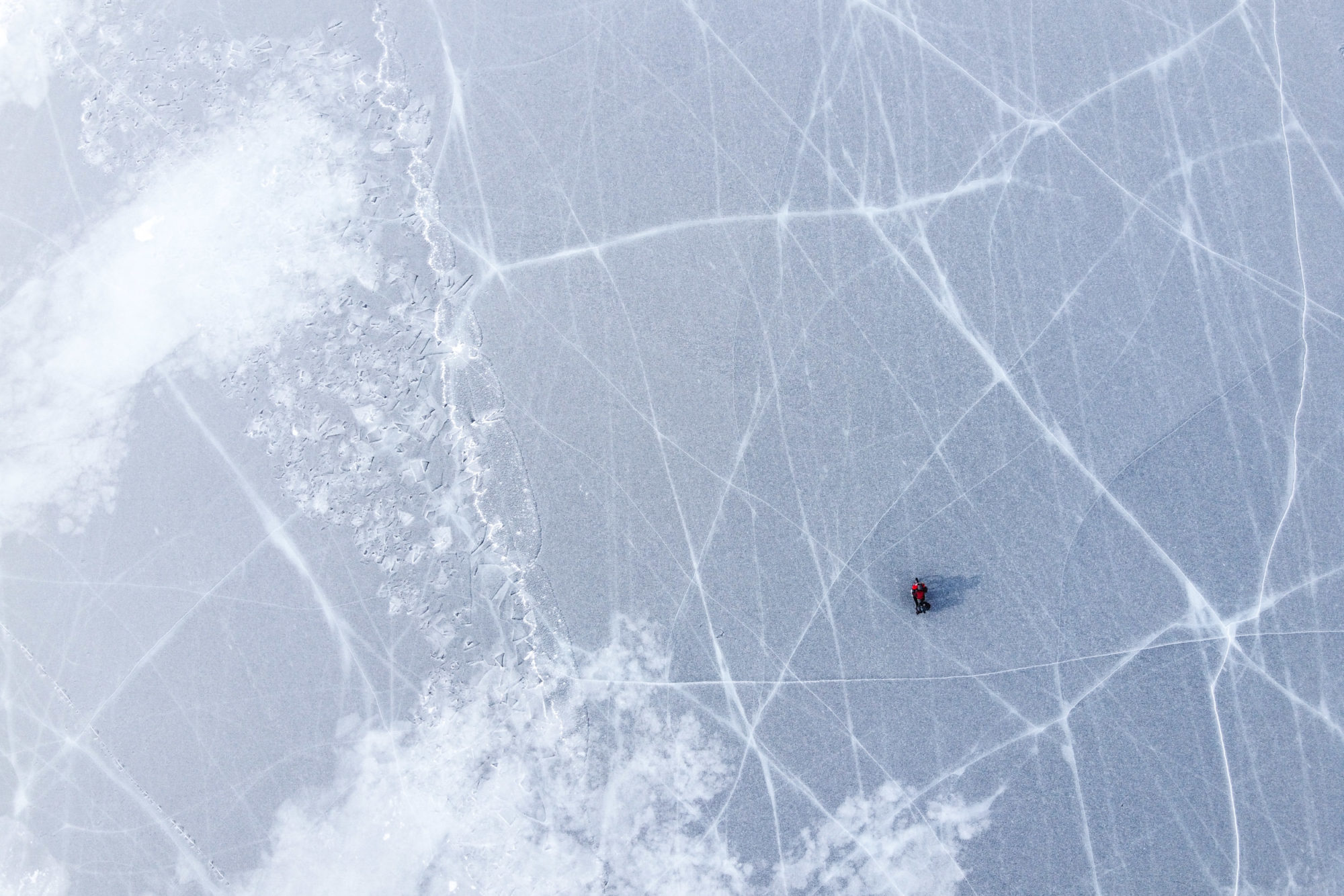
The snow finally disappeared to reveal the most spectacular surface I’ve ever ridden on: ice that was dark but at the same time so clear I could see exactly how thick it was, the sun reflecting through all the cracks and air bubbles trapped in the frozen water. It was a sight so beautiful that it nearly moved me to tears. I’d finally reached what I came for, even if it meant two long weeks of riding over treacherous, sometimes dangerous terrain.
I pedalled away from the touristic spot and found myself in the empty vastness again, but this time I was free to move around: the smooth, shiny surface was an invitation to wander. It was liberating to be able to ride anywhere I wanted, and to hear the rhythmic sound of my studded tyres rapping along on the ice. The temperatures had risen and a slight tailwind pushed me south, gently guiding me along. Those last 300 kilometres were almost ecstatic. The worriless, easy riding felt well earned and the incredible scenery was almost enough to make me forget about my aching body.
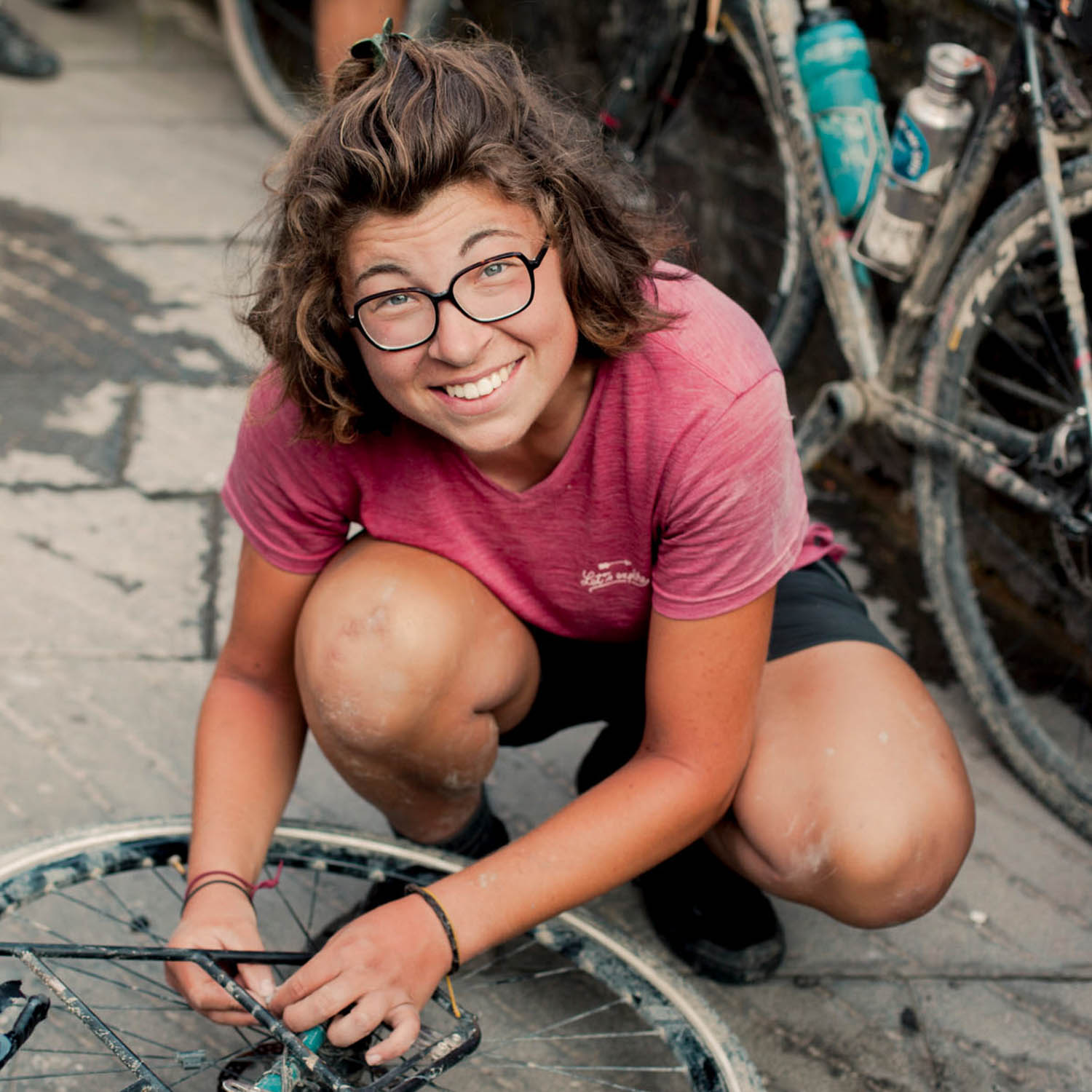
About Gaelle Bojko
Gaëlle Bojko is a 23-year-old architecture student from France. She set off on her first solo journey shortly after starting university in 2018 and now enjoys riding her loaded bike on anything from sunny roads to snowy tracks. You can find more from her on Instagram @biketotheblocks.
Please keep the conversation civil, constructive, and inclusive, or your comment will be removed.














